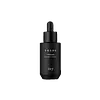What's inside
What's inside
 Key Ingredients
Key Ingredients

 Benefits
Benefits

 Concerns
Concerns

No concerns
 Ingredients Side-by-side
Ingredients Side-by-side

Water
Skin ConditioningSnail Secretion Filtrate
Skin ConditioningButylene Glycol
HumectantCyclopentasiloxane
EmollientPropanediol
SolventDibutyl Adipate
EmollientPentylene Glycol
Skin ConditioningIsostearyl Isostearate
EmollientSodium Ascorbyl Phosphate
AntioxidantAscorbic Acid
AntioxidantPolyacrylate Crosspolymer-6
Emulsion StabilisingTocopheryl Acetate
AntioxidantDeschampsia Antarctica Leaf Extract
AntioxidantFerulic Acid
AntimicrobialPanthenol
Skin ConditioningSodium Hyaluronate Crosspolymer
HumectantZea Mays Starch
AbsorbentMaltodextrin
AbsorbentDimethicone
EmollientEthylhexylglycerin
Skin ConditioningTrisodium Ethylenediamine Disuccinate
Cetyl Hydroxyethylcellulose
Emulsion StabilisingPolysilicone-11
Decyl Glucoside
CleansingPhenoxyethanol
PreservativeParfum
MaskingWater, Snail Secretion Filtrate, Butylene Glycol, Cyclopentasiloxane, Propanediol, Dibutyl Adipate, Pentylene Glycol, Isostearyl Isostearate, Sodium Ascorbyl Phosphate, Ascorbic Acid, Polyacrylate Crosspolymer-6, Tocopheryl Acetate, Deschampsia Antarctica Leaf Extract, Ferulic Acid, Panthenol, Sodium Hyaluronate Crosspolymer, Zea Mays Starch, Maltodextrin, Dimethicone, Ethylhexylglycerin, Trisodium Ethylenediamine Disuccinate, Cetyl Hydroxyethylcellulose, Polysilicone-11, Decyl Glucoside, Phenoxyethanol, Parfum
Glycerin
HumectantPropanediol
Solvent3-O-Ethyl Ascorbic Acid 15%
Skin ConditioningLactobacillus Ferment
Skin ConditioningWater
Skin ConditioningButylene Glycol
HumectantArbutin
AntioxidantVinegar
Panax Ginseng Root Extract
EmollientTriticum Aestivum Seed Extract
PerfumingTocopherol
AntioxidantHydrolyzed Ginseng Saponins
Skin ConditioningFructooligosaccharides
HumectantStreptococcus Thermophilus Ferment
HumectantLactococcus Ferment
Skin ConditioningCentella Asiatica Leaf Extract
Skin ConditioningCamellia Sinensis Leaf Extract
AntimicrobialBifida Ferment Lysate
Skin ConditioningXylitol
HumectantRhamnose
HumectantPerilla Frutescens Extract
Skin ConditioningNiacinamide
SmoothingInulin
Skin ConditioningSodium Hyaluronate
HumectantPanthenol
Skin ConditioningSodium Hyaluronate Crosspolymer
HumectantPotassium Hyaluronate
Skin ConditioningHydroxypropyltrimonium Hyaluronate
Hydrolyzed Sodium Hyaluronate
Skin ConditioningHydrolyzed Hyaluronic Acid
HumectantHyaluronic Acid
HumectantThiamine Hcl
MaskingPyridoxine
Skin ConditioningFolic Acid
Skin ConditioningBiotin
AntiseborrhoeicPentylene Glycol
Skin ConditioningSodium Acetylated Hyaluronate
HumectantMenadione
MaskingCyanocobalamin
Skin ConditioningRiboflavin
Cosmetic ColorantInositol
Humectant1,2-Hexanediol
Skin ConditioningPolyglyceryl-5 Oleate
EmulsifyingHydrogenated Lecithin
EmulsifyingPolyglyceryl-10 Stearate
Skin ConditioningVanilla Planifolia Fruit Extract
Skin ConditioningGlycerin, Propanediol, 3-O-Ethyl Ascorbic Acid 15%, Lactobacillus Ferment, Water, Butylene Glycol, Arbutin, Vinegar, Panax Ginseng Root Extract, Triticum Aestivum Seed Extract, Tocopherol, Hydrolyzed Ginseng Saponins, Fructooligosaccharides, Streptococcus Thermophilus Ferment, Lactococcus Ferment, Centella Asiatica Leaf Extract, Camellia Sinensis Leaf Extract, Bifida Ferment Lysate, Xylitol, Rhamnose, Perilla Frutescens Extract, Niacinamide, Inulin, Sodium Hyaluronate, Panthenol, Sodium Hyaluronate Crosspolymer, Potassium Hyaluronate, Hydroxypropyltrimonium Hyaluronate, Hydrolyzed Sodium Hyaluronate, Hydrolyzed Hyaluronic Acid, Hyaluronic Acid, Thiamine Hcl, Pyridoxine, Folic Acid, Biotin, Pentylene Glycol, Sodium Acetylated Hyaluronate, Menadione, Cyanocobalamin, Riboflavin, Inositol, 1,2-Hexanediol, Polyglyceryl-5 Oleate, Hydrogenated Lecithin, Polyglyceryl-10 Stearate, Vanilla Planifolia Fruit Extract
Ingredients Explained
These ingredients are found in both products.
Ingredients higher up in an ingredient list are typically present in a larger amount.
Butylene Glycol (or BG) is used within cosmetic products for a few different reasons:
Overall, Butylene Glycol is a safe and well-rounded ingredient that works well with other ingredients.
Though this ingredient works well with most skin types, some people with sensitive skin may experience a reaction such as allergic rashes, closed comedones, or itchiness.
Learn more about Butylene GlycolPanthenol is a common ingredient that helps hydrate and soothe the skin. It is found naturally in our skin and hair.
There are two forms of panthenol: D and L.
D-panthenol is also known as dexpanthenol. Most cosmetics use dexpanthenol or a mixture of D and L-panthenol.
Panthenol is famous due to its ability to go deeper into the skin's layers. Using this ingredient has numerous pros (and no cons):
Like hyaluronic acid, panthenol is a humectant. Humectants are able to bind and hold large amounts of water to keep skin hydrated.
This ingredient works well for wound healing. It works by increasing tissue in the wound and helps close open wounds.
Once oxidized, panthenol converts to pantothenic acid. Panthothenic acid is found in all living cells.
This ingredient is also referred to as pro-vitamin B5.
Learn more about PanthenolPentylene glycol is typically used within a product to thicken it. It also adds a smooth, soft, and moisturizing feel to the product. It is naturally found in plants such as sugar beets.
The hydrophilic trait of Pentylene Glycol makes it a humectant. As a humectant, Pentylene Glycol helps draw moisture from the air to your skin. This can help keep your skin hydrated.
This property also makes Pentylene Glycol a great texture enhancer. It can also help thicken or stabilize a product.
Pentylene Glycol also acts as a mild preservative and helps to keep a product microbe-free.
Some people may experience mild eye and skin irritation from Pentylene Glycol. We always recommend speaking with a professional about using this ingredient in your routine.
Pentylene Glycol has a low molecular weight and is part of the 1,2-glycol family.
Learn more about Pentylene GlycolPropanediol is an all-star ingredient. It softens, hydrates, and smooths the skin.
It’s often used to:
Propanediol is not likely to cause sensitivity and considered safe to use. It is derived from corn or petroleum with a clear color and no scent.
Learn more about PropanediolSodium Hyaluronate Crosspolymer is a type of hyaluronic acid. In fact, it is modified version of hyaluronic acid.
The structure of Sodium Hyaluronate Crosspolymer allows it to stay in the skin's top layer for a longer period of time. This allows for even more hydration and humectant action than hyaluronic acid.
These are some other common types of Hyaluronic Acid:
Learn more about Sodium Hyaluronate CrosspolymerWater. It's the most common cosmetic ingredient of all. You'll usually see it at the top of ingredient lists, meaning that it makes up the largest part of the product.
So why is it so popular? Water most often acts as a solvent - this means that it helps dissolve other ingredients into the formulation.
You'll also recognize water as that liquid we all need to stay alive. If you see this, drink a glass of water. Stay hydrated!
Learn more about Water